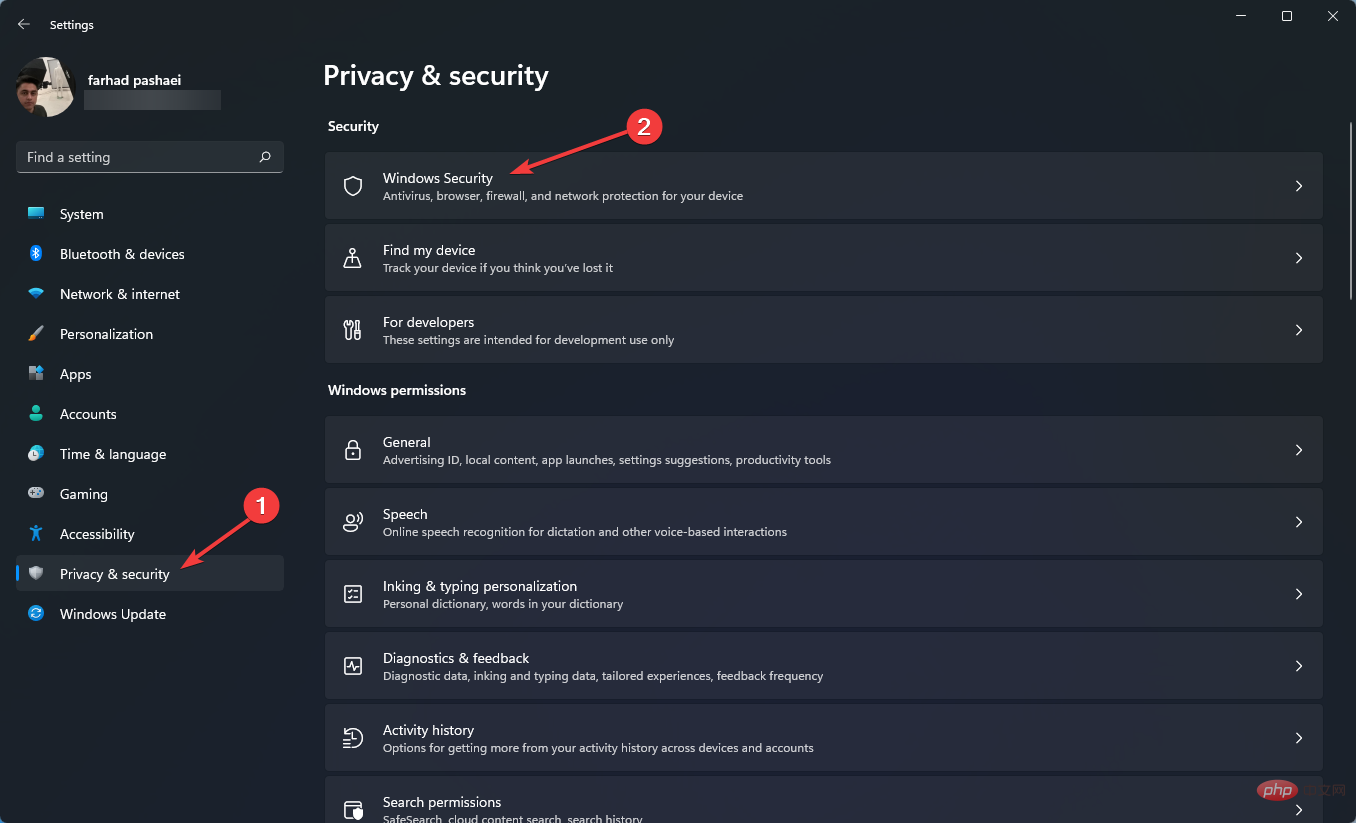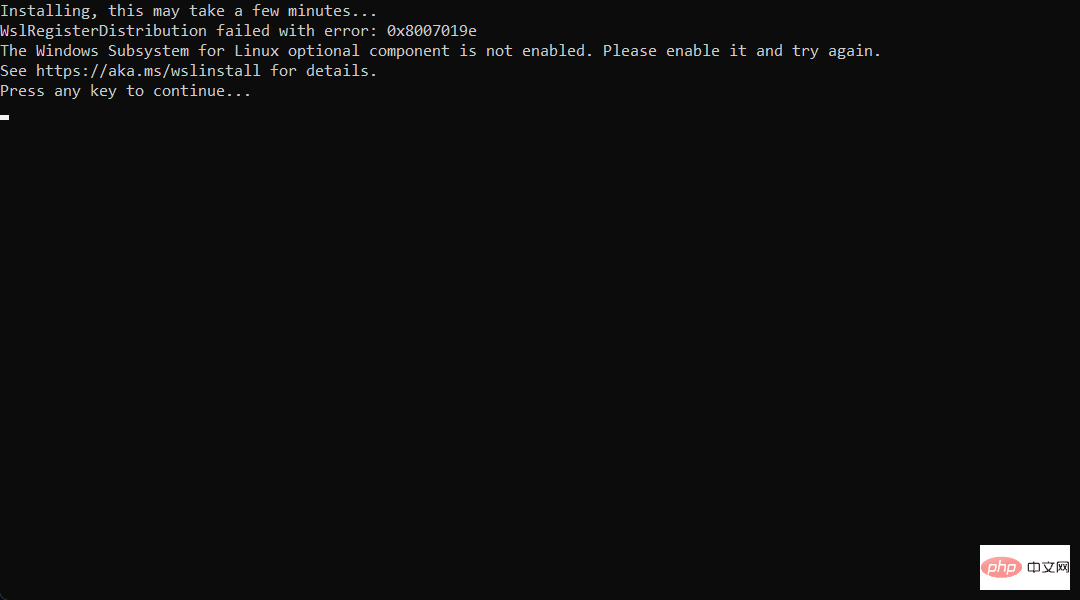Initialization part. This part includes initialization on the hardware layer and software layer. In this example, you need to configure the matrix circuit and the GPIO ports used by the SN74hc164 chip first so that the CPU can control and access them. In order to configure a GPIO port as an input, output or interrupt source, the correct value needs to be set in the corresponding GPIO control register. The specific value can be obtained by consulting the S3C2410 development board manual. For example, in order to set GPB1 as the input terminal of SN74hc164, two bits 2 and 3 in the GPBCON control word need to be set to binary 01. In order to set GPG6 as a low voltage jump interrupt source, two bits 12 and 13 in GPGCON need to be set. bit set to binary 10. After completing the hardware initialization operation, it is the initialization on the software layer. First, register the keyboard interrupt processing function to the system, and then set up a timer structure so that when the interrupt occurs, it will be hung in the kernel's timer queue. The timer will trigger the scanning operation of the keyboard. Finally, the 16 columns of the matrix circuit are set to zero through SN74hc164.
Interrupt handling part. As mentioned before, what this part of the software should do is to scan the special keyboard, determine which key is pressed, get a stable scan code, and then call the kernel export function handle_scancode. In this application, the layout of the special keyboard is similar to the layout of the PC standard keyboard, so we directly use the system scan code of the corresponding key on the PC keyboard as the scan code of each key on our special keyboard, and at the same time we use the PC keyboard driver The conversion function pckbd_translate from the scan code to the key code is used as our kbd_translate function.
The algorithm to determine which key is pressed is as follows. When the interrupt comes, we can already determine which row the pressed key is based on the interrupt number, and we also need to determine which column the pressed key is. To this end, we first send a CLR signal to the two SN74hc164 chips connected in series, clear it, and then send 16 1s, so that the columns of the special keyboard are all high. At this time, what we read on the row ports of the keyboard are all high. Potential. Under 16 clock pulses, 1 0 and 15 1s are sent to the SN74hc164 chip, so that 0 appears uniquely once in each column, and at the same time, the keyboard row port is scanned. When the column of the pressed key is set to 0, the row where it is located will read a low level. Using this "walk 0 method", we can determine which key on the keyboard was pressed. But this simple scanning algorithm is not enough, because in this type of matrix scanning keyboard, every time a key is pressed and lifted, there will be 10~20ms (the length of this period is determined by the hardware characteristics) burr jitter. , as shown in Figure 2, so in order to obtain stable key information, it is necessary to find a way to remove this jitter to avoid mistaking the user's one key press as several key presses. A common method of deburring is to not scan the keyboard immediately when a keyboard interrupt arrives, but to wait for a period of time and then scan the keyboard after skipping the burr jitter. The pseudo code is as follows:
Wait for a period of time and skip the jitter;
Scan the keyboard;
if no key is pressed on the keyboard
End and return;
if a key is pressed on the keyboard
Wait for a while again and check if the same key is Still pressed;
if the same key is still pressed
to return the scan code read;
else
to return directly;
This solution is certainly feasible, but it uses busy The waiting method is used to remove burrs. During the busy waiting period, the system cannot do any useful work. This is a luxurious waste for embedded Linux systems with limited computing resources. In this application, we designed a deburring solution suitable for embedded systems with good results.
Since the Linux kernel provides a timer queue, we can use this mechanism to avoid busy waiting and improve system performance. When a key on the keyboard is pressed, the keyboard interrupt handler first closes the interrupt source, enters polling mode, and ends after hanging a timerlist object into the timer queue. The timer hooked into the kernel is triggered on time, and the function it triggers completes the following tasks: first scans all the keys on the entire keyboard, and saves the scan results to a static 2-dimensional array variable snap_shot_matrix[16 ][4]. This variable describes the pressing status of all keys on the keyboard at this moment of this keyboard scan. If a key is not pressed, that is, it is in a released state, then the corresponding value in snap_shot_matrix is set to 0. If a key is pressed, then the corresponding value in snap_shot_matrix is incremented by 1. If the If the value is greater than a pre-specified number after increasing by 1, we can consider it to be a stable value, and set the value in the corresponding coordinates of another 2-dimensional array variable current_matrix with a size of 16*4 to 1, otherwise set it to 0 . This variable describes the stable value of the current keystrokes on the keyboard. That is to say, we first process the sampled data obtained in this scan and save it to snap_shot_matrix, and then filter to obtain the current_matrix based on the value in this variable. Through this process, we perform deburring processing. After obtaining the stable value current_matrix of this scan, we compare it with the stable value previous_matrix obtained last time to determine whether the key conditions on the keyboard have changed at this moment compared with the last scan, and whether the keyboard conditions at this moment have changed. whether a key is pressed. If it is found that no keys on the keyboard are pressed, turn on the keyboard interrupt and switch back to interrupt mode again. If a key is pressed on the keyboard, and it is different from the last scanned pressed key, we immediately call the key processing function process_key, which will call the upper-level function handle_scancode in the keyboard driver. If the key pressed on the keyboard is the key pressed last time, we will increment a counter. When the counter reaches a certain specified value, we start the so-called Auto repeat function, that is, the user keeps pressing a certain key. The driver automatically generates keyboard input repeatedly. This counter is set to 0 when the key pressed changes. But as long as there are still keys on the keyboard that are pressed, we copy the currently read keyboard stable value current_matrix to the previous_matrix, and hang the previously described timer object into the kernel timer queue again. After a while, Then scan the entire keyboard again until no keys on the keyboard are pressed.
4 Conclusion
With the advancement of the information society and computer software and hardware technology, the design and application of embedded information products have developed rapidly, and the need to add special keyboard drivers to your own embedded Linux systems is also increasing. universal. After introducing the overall framework of the keyboard driver in Linux, this article takes a special keyboard on the S3C2410 development board as an example to focus on describing the work that needs to be done when writing a driver for a special keyboard in an embedded Linux environment, providing a basis for similar The development provides an idea and reference.
(T114)
The above is the content of (1) (2) of the keyboard driver implementation of an embedded Linux system. For more related content, please pay attention to the PHP Chinese website (www.php.cn)!
 这就是修复 Windows 11 的 WSL 错误的方法May 03, 2023 pm 07:19 PM
这就是修复 Windows 11 的 WSL 错误的方法May 03, 2023 pm 07:19 PMWindows11中的WSL错误可能由于多种原因而发生。确切的消息是WslRegisterDistributionFailed并带有不同的错误代码。适用于Linux的Windows子系统(WSL)是一项允许开发人员和典型用户在其Windows计算机上安装和使用Linux的功能。尽管此功能对开发人员非常有价值,但它有时会导致难以修复的令人难以置信的复杂情况。幸运的是,这些错误并非不可克服。在这篇文章中,我们将讨论所有可能的原因和解决方案。Windows11中最常见的W
 如何在 Windows 10 或 11 WSL 上安装 Oracle Linux – 子系统Apr 14, 2023 pm 10:07 PM
如何在 Windows 10 或 11 WSL 上安装 Oracle Linux – 子系统Apr 14, 2023 pm 10:07 PM在Windows10上安装OracleLinux8或7.5的步骤|11WSL1.启用WSL–Windows子系统Linux我们需要拥有的第一件事是WSL,如果尚未启用它,请启用它。转到搜索框并输入–打开或关闭Windows功能。在选项出现时,单击以打开相同。在打开的窗口中,向下滚动并选择为Linux的Windows子系统提供的框。然后单击确定按钮。之后重新启动系统以应用更改。2.在Windows11或10上下载OracleLinx8或
 在 Windows 上运行 shell 脚本文件的不同方法Apr 13, 2023 am 11:58 AM
在 Windows 上运行 shell 脚本文件的不同方法Apr 13, 2023 am 11:58 AM适用于 Linux 的 Windows 子系统第一种选择是使用适用于 Linux 或 WSL 的 Windows 子系统,这是一个兼容层,用于在 Windows 系统上本地运行 Linux 二进制可执行文件。它适用于大多数场景,允许您在 Windows 11/10 中运行 shell 脚本。WSL 不会自动可用,因此您必须通过 Windows 设备的开发人员设置启用它。您可以通过转到设置 > 更新和安全 > 对于开发人员来完成。切换到开发人员模式并通过选择是确认提示。接下来,查找 W
 如何处理Linux系统中频繁出现的进程资源耗尽问题Jun 29, 2023 am 09:58 AM
如何处理Linux系统中频繁出现的进程资源耗尽问题Jun 29, 2023 am 09:58 AM如何处理Linux系统中频繁出现的进程资源耗尽问题概述:Linux系统下,有时会出现进程资源耗尽的情况,如CPU负载高、内存占用过多等问题。这些问题可能导致系统性能下降,甚至系统崩溃。本文将介绍一些解决进程资源耗尽问题的常见方法。一、定位问题:监测系统资源:使用top、htop等工具监测系统资源的使用情况,包括CPU、内存、磁盘和网络等。查看进程:使用ps命
 想在 Windows 11 上安装 AlmaLinux?这是怎么做的Apr 30, 2023 pm 08:13 PM
想在 Windows 11 上安装 AlmaLinux?这是怎么做的Apr 30, 2023 pm 08:13 PM在MicrosoftStore中,现在有一个版本的AlmaLinux与适用于Linux的Windows子系统兼容。这为用户提供了一系列令人印象深刻的新选项,因此我们将向您展示如何在Windows11上安装AlmaLinux。它于2021年3月发布,提供了第一个稳定的生产版本,此后该非营利基金会增加了许多新成员。最近的AMD是上个月加入的,时间是2022年3月。借助适用于Linux的Windows子系统,在Windows和Linux世界中工作的开
 如何优化和调整Linux系统的内核参数以提高性能Jun 29, 2023 am 10:24 AM
如何优化和调整Linux系统的内核参数以提高性能Jun 29, 2023 am 10:24 AM如何优化和调整Linux系统的内核参数以提高性能摘要:Linux操作系统是世界上最流行的操作系统之一,拥有强大的性能和灵活的配置选项。本文介绍了如何通过优化和调整Linux系统的内核参数来提高性能。从理解内核参数的含义开始,将探讨常见的性能调优技巧,包括内存管理、磁盘IO、网络和调度器等方面。通过这些优化和调整,用户可以更好地利用Linux系统,提升工作效率
 linux中acpi是什么意思Jun 01, 2023 pm 04:03 PM
linux中acpi是什么意思Jun 01, 2023 pm 04:03 PMlinux中acpi是“Advanced Configuration and Power Interface”的缩写,意思是高级配置与电源管理接口,这是微软、英特尔和东芝共同开发的一种工业标准。ACPI是提供操作系统与应用程序管理所有电源管理接口,包括了各种软件和硬件方面的规范。
 Linux系统中的服务优化指南Jun 18, 2023 pm 02:32 PM
Linux系统中的服务优化指南Jun 18, 2023 pm 02:32 PM随着Linux操作系统在企业中的广泛应用,对其服务的优化需求越来越高。本文将介绍Linux系统中常见的服务优化指南,以帮助企业更好地运维和管理Linux系统。禁止不必要的服务Linux系统中预装了许多服务程序,其中一些可能不会被企业所使用。禁止不必要的服务可以降低系统资源的消耗,并减少系统的安全漏洞。例如,企业如果不需要用到FTP服务,可以通过禁用FTP服务


Hot AI Tools

Undresser.AI Undress
AI-powered app for creating realistic nude photos

AI Clothes Remover
Online AI tool for removing clothes from photos.

Undress AI Tool
Undress images for free

Clothoff.io
AI clothes remover

AI Hentai Generator
Generate AI Hentai for free.

Hot Article

Hot Tools

SublimeText3 English version
Recommended: Win version, supports code prompts!

DVWA
Damn Vulnerable Web App (DVWA) is a PHP/MySQL web application that is very vulnerable. Its main goals are to be an aid for security professionals to test their skills and tools in a legal environment, to help web developers better understand the process of securing web applications, and to help teachers/students teach/learn in a classroom environment Web application security. The goal of DVWA is to practice some of the most common web vulnerabilities through a simple and straightforward interface, with varying degrees of difficulty. Please note that this software

mPDF
mPDF is a PHP library that can generate PDF files from UTF-8 encoded HTML. The original author, Ian Back, wrote mPDF to output PDF files "on the fly" from his website and handle different languages. It is slower than original scripts like HTML2FPDF and produces larger files when using Unicode fonts, but supports CSS styles etc. and has a lot of enhancements. Supports almost all languages, including RTL (Arabic and Hebrew) and CJK (Chinese, Japanese and Korean). Supports nested block-level elements (such as P, DIV),

Notepad++7.3.1
Easy-to-use and free code editor

PhpStorm Mac version
The latest (2018.2.1) professional PHP integrated development tool






